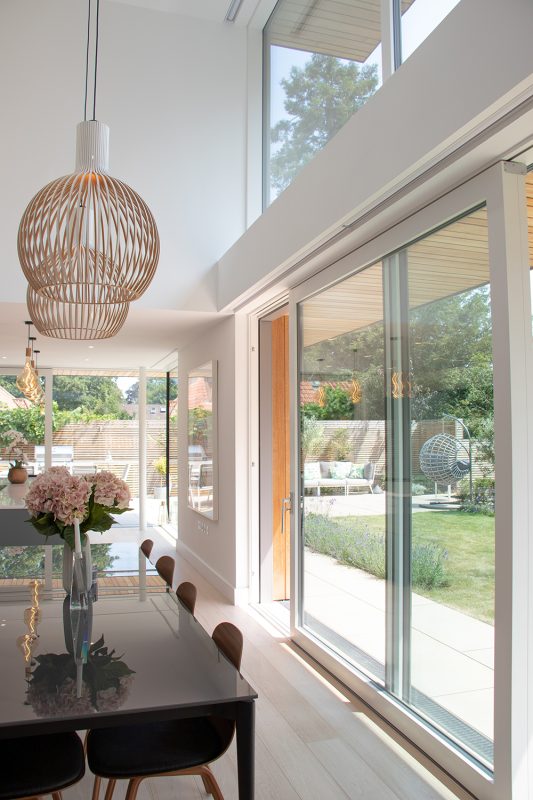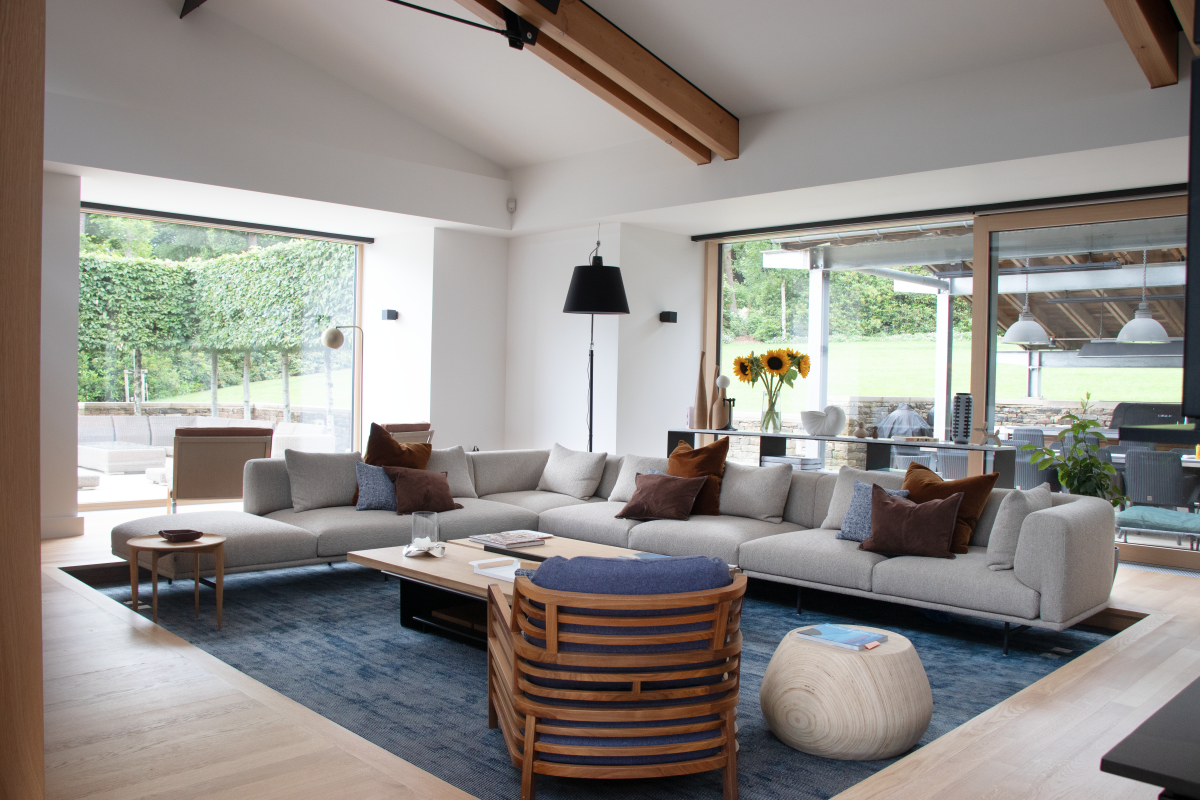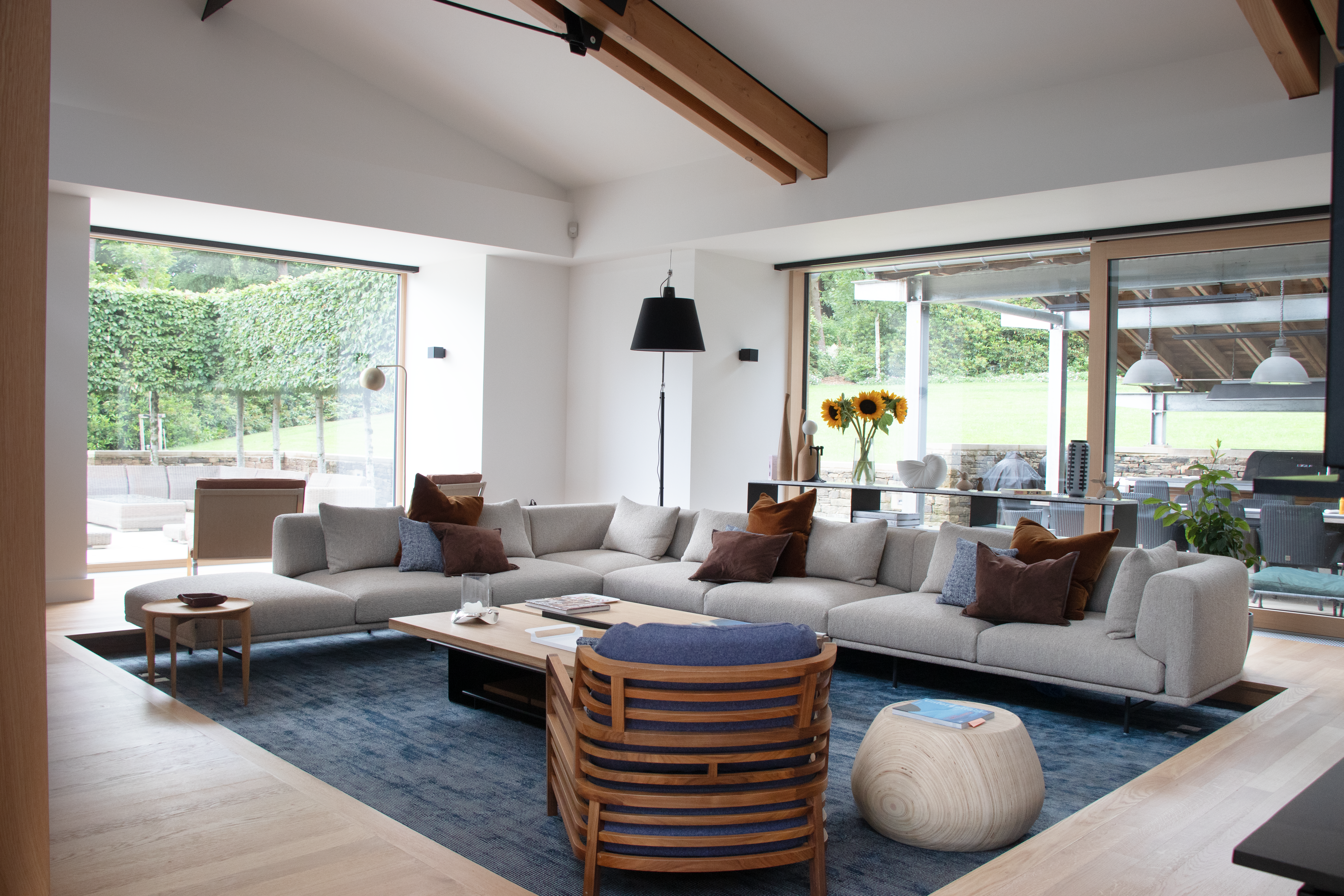Passivhaus is the most stringent building standard in the world that reduces the energy demand in a building and optimises thermal comfort, ensuring that at the same time there is plentiful clean, fresh air.
The windows in any building, including the Passivhaus ones, have a multi-faceted role. They need to provide abundant daylight, make the most of the views, ensure high levels of security, and unify the interior with the exterior space. Passivhaus windows, on top of all the above, must reduce heat loss to a minimum, maximise useful solar gains in the winter, therefore optimising the energy balance, provide exceptional thermal comfort and eliminate radiant cold from the glass surface as well as draughts. They also need to ensure high longevity so that the windows can be compatible with the other components of the building envelope.

Heat losses – Thermal insulation
Heat losses through the window primarily depend on the heat transfer coefficient of the window, the Uw value. The Uw quantifies the heat losses from the whole window, not just from the glass. The thermal insulation of the whole window depends on the performance of the glazing unit, the frame, the glass spacers and the interface between the glazing unit and frame and finally the installation detail of the window on the wall. However, the last one, depends more on the window design and architectural details rather than the window itself.
Internorm windows use:
- Standard high performing triple glazed units with argon gas infill and low emissivity coating (Low-E). The U value achieved for the glazing unit is in the range of 0.5 – 0.6 W/(m²K).
- Highly thermal insulated frame profiles across the whole range of timber-aluminium and uPVC-aluminium windows. Typical Uf values are in the range of 0.8 – 0.9 W/(m²K).
- Standard warm-edge spacers, so the thermal bridge heat losses across the glazing unit get significantly reduced. Internorm windows also provide as standard the glass-bonding technology. Having the glazing unit bonded to the frame doesn’t allow for high convection heat losses that otherwise would occur, because the bonding layer blocks the path between the frame and the glazing unit. This further reduces the thermal bridge heat losses.
Windows for Passivhaus projects in the UK, as well as most of Europe, need to have Uw value for the installed window less than 0.85 W/(m²K).

Solar Gain
The solar gains primarily depend on the solar heat gain coefficient of the glass, the g-value, and the total surface of the glazing unit. The building design and how the window is located, orientated, and shaded also significantly affect the solar gains. In the winter, we try to maximise the solar gains utilising the free energy from the sun.
Internorm windows use special ECLAZ® coating as standard to achieve optimal light transmission and g-values. Typical g-values for the glazing units used are 0.55 – 0.6, which means that 55% – 60% of the incident solar radiation is transmitted through the glass into the building.
Thermal Comfort
Conventional windows can create discomfort in three different ways:
- Temperature Asymmetry – The glazing surface of the window is colder than other areas in the room (walls). If the surface temperature difference between the window and the wall becomes greater than 4.2 degrees Celsius, it would feel more comfortable to move away from the window, further approaching warmer surface areas.
- Heat Loss – The heat produced by the human body is radiated to the colder surface area of the window and we feel colder.
- Cold Draughts – As the warm, conditioned air in the room comes in contact with the window, it gets colder and sinks. This can create unpleasant draughts and often radiators are placed beneath the windows to counterbalance this effect. Internorm Passivhaus windows are less than 4.2 degrees Celsius colder than the mean surface temperature of the surrounding space. This ensures that there are no cold draughts because of cold surfaces. There is not a discernible temperature asymmetry and significant heat loss from our body radiating to a colder window. Internorm windows create a lovely architectural feature, such as a window seat, popular in Passivhaus properties. You can sit right next to the window, enjoying the views on a really cold winter day without feeling any discomfort from radiant cold or unpleasant draught.

Passivhaus Windows – Hygiene and Health
Conventional windows, apart from the discomfort they create, can also have a detrimental impact on health. The colder surface temperature means that the relative humidity on the window surfaces can be high enough for mould growth or condensation to occur. This creates associated danger to health.
Internorm windows have exterior insulation, which keeps the surface temperature above the mould growth threshold and dew point. Notably, even timber-aluminium windows – timber is more susceptible to mould growth problems, incorporate insulation between the aluminium cladding and the timber frame. This ensures that even the timber layer is kept comfortably above the mould growth temperature threshold. The goal to keep the relative humidity on the timber’s surface below 80% is achieved in this way. Mould develops when the relative humidity of the surface exceeds 80%.
Longevity
The high energy efficiency results in warm surface temperatures, low relative humidity levels of the surface, and absence of mould. These are pre-requisites for the component’s longevity.
Internorm windows will continue to perform without major maintenance over many decades.
Airtightness
There are no required airtightness performance criterion stipulated by the Passivhaus Standard for windows, as it focuses on the airtightness of the whole building. Passivhaus windows need to be as airtight as possible, minimising the infiltration heat losses.
Internorm windows achieve the highest classification in relation to airtightness (Class 4).
Additionally, when we consider a window’s airtightness, we should not forget to assess the achieved wind load resistance. The maximum airtightness capacity is required when it is very windy outside.
If the most deformed part of the window – on most occasions in the middle of its height, is bent, or even worse bent permanently and not able to cope with the prevailing wind load, the airtightness doesn’t exist anymore.
Internorm windows, having the glass bonding technology I-tec Glazing as standard, are more robust than conventional windows. In this case, the frame and glazing unit act as one solid element. Internorm windows can withstand wind pressure up to 2000Pa, which is equivalent to a wind speed of 205Km/h.
For further information on Internorm windows and doors for Passivhaus and EnerPHit project, please speak to your local Internorm distribution partner.
Contributor: Vasilis Giannopoulos
